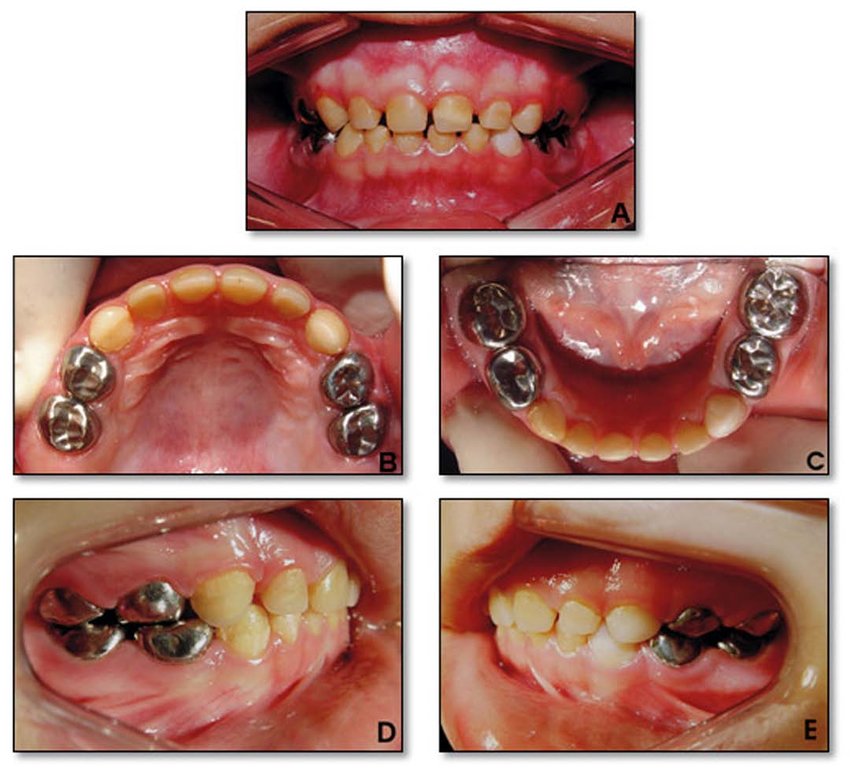Signs and Symptoms of Teething in Babies: A Comprehensive Guide for Parents

Teething is a significant developmental milestone in a baby’s life, marking the emergence of their first set of teeth, or primary teeth. While it is an exciting time, it can also be challenging for both babies and parents due to the discomfort and symptoms associated with teething. Understanding the signs and symptoms of teething can help you better support your baby during this time and know when to seek additional care if needed.
In this comprehensive guide, we’ll explore the common signs and symptoms of teething, how to differentiate teething from other conditions, and practical tips for easing your baby’s discomfort.
Understanding the Teething Process
Teething typically begins around 4 to 7 months of age, though it can vary widely among babies. Some may start teething as early as 3 months, while others may not get their first tooth until after their first birthday. The process generally continues until about age 3 when all 20 primary teeth have erupted.
Teething Timeline
- 4 to 7 months: Lower central incisors (bottom front teeth) usually emerge first.
- 8 to 12 months: Upper central incisors (top front teeth) come next.
- 9 to 16 months: Upper and lower lateral incisors (side front teeth) appear.
- 13 to 19 months: First molars (back teeth used for grinding food) emerge.
- 16 to 23 months: Canines (pointed teeth between incisors and molars) make their appearance.
- 23 to 33 months: Second molars (the last set of primary teeth) emerge.
This timeline is just a general guide; every child is different, and some may experience teeth in a different order or at different times.
Common Signs and Symptoms of Teething
Teething can manifest in various ways, with symptoms that range from mild discomfort to more noticeable signs of distress. Here are the most common symptoms of teething in babies:
1. Drooling
Increased drooling is often one of the first signs of teething. Babies can start drooling weeks before a tooth actually breaks through the gum. The excess saliva helps soothe the inflamed gums but can also cause:
- Skin Irritation: Constant drooling may lead to a drool rash on your baby’s chin, cheeks, and neck.
- Choking Hazards: While rare, excessive drool can sometimes cause gagging or coughing.
Tips to Manage Drooling:
- Keep a soft bib on your baby to absorb excess drool.
- Gently wipe your baby’s face with a soft cloth to prevent skin irritation.
- Apply a mild, baby-safe moisturizer to protect the skin from irritation caused by constant moisture.
2. Chewing and Biting
Babies experiencing teething often have a strong urge to chew on objects, which provides counter-pressure that can alleviate the discomfort of teeth pushing through the gums. They may bite on:
- Toys
- Teething rings
- Their own hands or fingers
- Your fingers or nipples if breastfeeding
Tips to Manage Chewing and Biting:
- Provide safe teething toys made of silicone or rubber.
- Avoid teething toys filled with liquid, as they can break.
- Offer a cold (not frozen) teething ring to soothe inflamed gums.
3. Gum Swelling and Tenderness
Swollen, red gums are a hallmark of teething. You may notice that your baby’s gums look swollen or feel firmer than usual, especially where a tooth is about to emerge.
Tips to Soothe Swollen Gums:
- Use a clean finger or a wet gauze pad to gently massage the gums.
- Offer a chilled (but not frozen) washcloth for your baby to chew on.
- Avoid applying excessive pressure, as this can cause more discomfort.
4. Irritability and Fussiness
Teething can cause discomfort, which may lead to increased irritability or fussiness. The pain is often worse at night when there are fewer distractions and can result in disrupted sleep patterns.
Tips to Calm a Fussy Baby:
- Provide extra cuddles and comfort during this time.
- Try a gentle rocking motion or a soothing bath to relax your baby.
- Maintain a consistent bedtime routine to help with sleep disruptions.
5. Loss of Appetite
Teething pain can make sucking and chewing uncomfortable, leading to a temporary decrease in appetite. Babies may:
- Refuse to eat solid foods.
- Be reluctant to breastfeed or take a bottle.
- Have a disrupted feeding schedule.
Tips to Encourage Eating:
- Offer cool, soft foods like yogurt or applesauce that are gentle on the gums.
- Avoid foods that are too hot or cold, as extreme temperatures can cause discomfort.
- Be patient and offer feeds more frequently but in smaller amounts.
6. Disturbed Sleep
The discomfort of teething can cause sleep disturbances. Babies who were previously good sleepers may start waking up more frequently during the night.
Tips to Improve Sleep:
- Keep your baby’s room at a comfortable temperature.
- Use white noise or calming music to create a soothing sleep environment.
- Offer a comfort object like a soft blanket or toy, if age-appropriate.
7. Pulling on Ears and Rubbing Cheeks
Babies might pull on their ears or rub their cheeks as a way to alleviate teething pain. This behavior occurs because the pain from the gums can radiate to the ears and cheeks.
When to Be Concerned:
- If your baby shows signs of an ear infection (fever, crying when lying down, fluid from the ear), consult a pediatrician, as ear pulling can sometimes be misinterpreted as teething.
8. Slight Increase in Temperature
Teething can cause a slight increase in body temperature, but it’s usually not high enough to be considered a fever. A fever over 100.4°F (38°C) is more likely due to an illness rather than teething.
Tips for Managing Mild Temperature Increases:
- Dress your baby in light clothing.
- Ensure they stay hydrated with breast milk, formula, or water if age-appropriate.
- Use a cool washcloth to gently wipe their face and body.
9. Changes in Stool
Some parents report looser stools when their baby is teething, possibly due to swallowed saliva. However, severe diarrhea is not typically associated with teething and may indicate a gastrointestinal issue.
Tips for Managing Stool Changes:
- Keep your baby hydrated, especially if they have looser stools.
- Monitor for signs of dehydration (dry mouth, fewer wet diapers).
- Contact your pediatrician if the stool changes are severe or persistent.
Less Common Symptoms of Teething
While the symptoms above are common, there are a few less frequent signs that some babies may experience:
1. Diaper Rash
- Increased saliva production can lead to changes in stool consistency, which may irritate the skin and cause diaper rash.
- Use a barrier cream to protect your baby’s skin.
2. Coughing or Gagging
- Excessive drooling can sometimes lead to mild coughing or gagging.
- If coughing persists or is severe, consult your pediatrician.
3. Facial Rash
- Constant drooling can lead to a mild rash around the mouth and chin.
- Keep the area dry and apply a gentle moisturizer to protect the skin.
When to See a Doctor
While teething can cause discomfort, it should not cause severe symptoms like high fever, persistent diarrhea, or significant pain that can’t be soothed. If your baby exhibits any of the following, it’s best to consult with a pediatrician:
- High fever (above 100.4°F or 38°C)
- Severe irritability or pain
- Symptoms lasting more than a few days without improvement
- Concerns about how teething is affecting feeding or sleep
Teething vs. Other Conditions
It’s important to differentiate teething symptoms from those of other conditions, such as ear infections, colds, or gastrointestinal issues. Teething generally does not cause high fever, severe diarrhea, or vomiting. If your baby exhibits these symptoms, it’s likely due to another illness, and you should seek medical advice.
Tips for Easing Teething Discomfort
Managing teething symptoms effectively can make a big difference in your baby’s comfort. Here are some additional tips:
- Use Teething Gels Sparingly: Consult with your pediatrician before using over-the-counter teething gels or pain relievers. Some products contain ingredients that are not recommended for infants.
- Offer a Cold Washcloth: Let your baby chew on a clean, chilled washcloth. The cold can soothe sore gums, and the texture provides a safe surface for chewing.
- Try Breast Milk Popsicles: For breastfed babies, frozen breast milk popsicles can offer soothing relief while providing nutrients.
- Maintain Good Oral Hygiene: Start cleaning your baby’s gums with a soft, damp cloth even before teeth emerge. As teeth appear, switch to a soft baby toothbrush and water.
- Provide Distractions: Engaging activities or favorite toys can help take your baby’s mind off teething discomfort.
Conclusion: Supporting Your Baby Through Teething
Teething is a natural part of your baby’s development, but it can be a challenging time for both babies and parents. By recognizing the signs and symptoms of teething and employing effective comfort measures, you can help ease your baby’s discomfort. Remember, every baby is different—some may sail through teething with minimal fuss, while others may need a little extra care and patience.
Monitor your baby’s symptoms, provide comfort and care, and don’t hesitate to reach out to your pediatrician if you have concerns. With the right approach, you can help your baby navigate this milestone with ease and set the stage for a lifetime of healthy dental habits.
Related to read:
Best Oral Hygiene Practices For Optimum Oral Health.
Bruxism: Teeth grinding causes treatment and prevention.
How to keep your gums healthy and disease-free?
References
To ensure the information provided is accurate and up-to-date, the following sources were referenced:
- American Dental Association. (n.d.). Plaque and Tartar. Retrieved from ADA website
- Mayo Clinic. (n.d.). Dental Plaque. Retrieved from Mayo Clinic website
- National Institute of Dental and Craniofacial Research. (n.d.). Periodontal (Gum) Disease. Retrieved from NIDCR website









